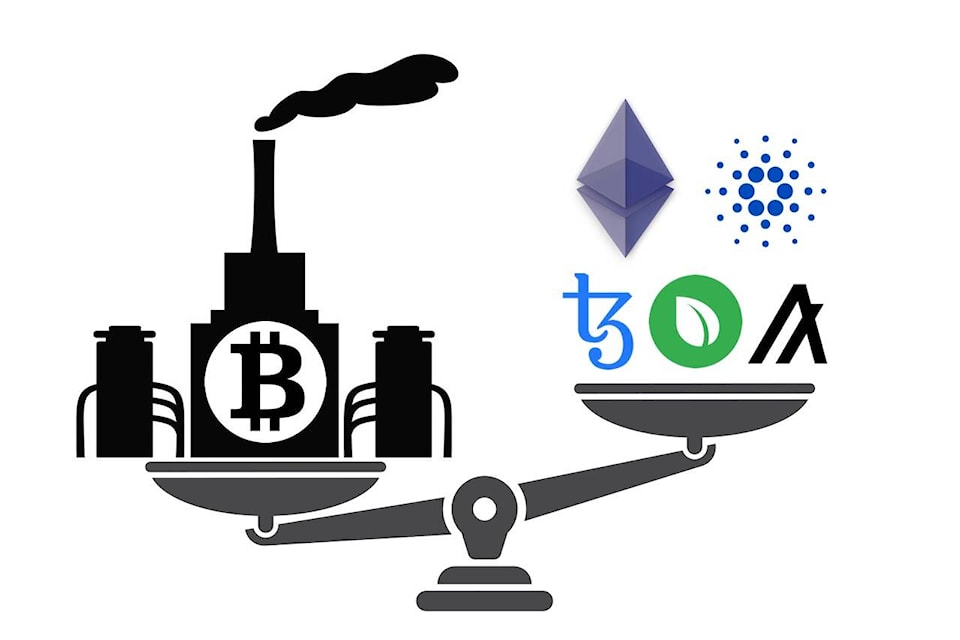by Rick Mandge
All eyes will be on the Merge in mid-September 2022 when the Ethereum blockchain changes the way that new data is added to its network. The original “proof of work” mechanism which requires miners to solve difficult math problems will be replaced by “proof of stake” where participants have to put up a meaningful amount of Ethereum to get rewarded for verifying transactions. In doing so, developers expect energy consumption by the world’s 2nd largest blockchain by market capitalization to decrease by 99%.
Well before the Merge, blockchains like Algorand, Avalanche, Cardano, and Tezos have already been using the “proof of stake” governance mechanism to minimize their carbon footprint. “Proof of stake” was originally pioneered by Peercoin. Based on Bitcoin’s code base and positioned as a green alternative, Peercoin has been active for more than 10 years. Yet, the Bitcoin community continues to rely on “proof of work” and to engage in the relentless and expensive race to mine the next Bitcoin resulting in massive CO2 emissions that contribute to global warming.
According to Cambridge Centre for Alternative Finance, Bitcoin mining uses an estimated 96.5 terawatt-hours of electricity per year which is nearly the amount consumed by the entire country of Pakistan. Some miners have already switched to 100% renewable energy sources by getting behind the Crypto Climate Accord while groups like Greenpeace USA and Environmental Working Group are trying to persuade the Bitcoin community to change the code itself.
There are also efforts to convince Bitcoin developers to switch to competing “proof of work” frameworks that are eco-friendly. Nano developed block lattice technology that lets users vote for a representative who then works to securely confirm blocks of transactions. IOTA uses fast probabilistic consensus to reduce transaction size.

Despite all of the innovation, the original Bitcoin still domainates the blockchain space. Analysts point out that Bitcoin economics has evolved to the point where miners find it most rewarding by drawing from the cheapest energy sources — whether they are clean or dirty. In fact, miners have actually shut down operations in one country in order to move their entire operations to another country. In such a scenario, damage to the environment will keep taking place somewhere on the planet until low-cost clean energy is readily available everywhere.
One proposed solution to the climate conundrum is through securities regulation and taxation. If exchanges are not allowed to list “dirty” cryptocurrencies or obligated to levy a tax on them, their liquidity would be negatively affected.
However, this level of control and interference goes against the decentralized nature of blockchain as a permissionless platform. Blockchain purists would never accept the idea of an outside party picking winners and losers.
Perhaps, developers and investors will reward Ethereum and other players using “proof of stake” and lead to gains in market share that would sideline Bitcoin — or we have to wait patiently until the last Bitcoin is minted in the year 2140.
